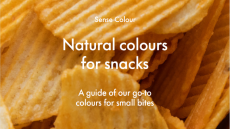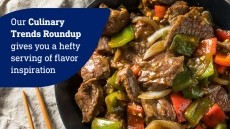USDA updates list of allowed organic ingredients
color ingredients or the food additive potassium tartrate,
following the publication of a new rule by the US Department of
Agriculture (USDA).
The final rule, published in the Federal Register of October 16, amends the USDA's National List of Allowed and Prohibited Substances (National List) for production of organic foods and beverages. Established by the Organic Foods Production Act (OFPA), the National List identifies substances that are allowed (exempted) or prohibited in organic production and handling. These exemptions and prohibitions must be reviewed every five years by the National Organic Standards Board (NOSB). The new rule amends the National List based on NOSB's review and subsequent recommendations submitted from November 17, 2005 through October 19, 2006. Effective October 21, 2007, the rule renews 46 exemptions and prohibitions and removes 2 exemptions, for substances for use in the production of organic processed products. Substances no longer allowed for use in processed organic foods are colors derived from nonsynthetic sources, and potassium tartrate made from tartaric acid. A total of 41 nonagricultural substances received renewed approval for use in organic food and drink products, including citric acid, lactic acid, dairy cultures, flavors, sodium carbonate, and xanthan gum. Five nonorganically produced agricultural products also received renewed approval: cornstarch (native); water extracted gums (arabic, guar, locust bean, carob bean); kelp - for use only as a thickener and dietary supplement; unbleached lecithin; and pectin (high-methoxy). Based upon USDA's Economic Research Service and AMS data compiled from 2001 to 2005, the US organic industry at the end of 2005 included nearly 8,500 certified organic crop and livestock operations, plus more than 2,900 handling operations. Organic crop and livestock operations reported certified acreage totaling more than 4.05 million acres of organic farm production. Total number of organic crop and livestock operations increased by more than 18 percent from 2001 to 2005, while total certified acreage more than doubled during this time period. AMS estimates that these trends continued through 2006 and will be higher in 2007. US sales of organic food and beverages have grown from $1bn in 1990 to nearly $17bn in 2006. Organic food sales are projected to reach $23.8bn for 2010. The organic industry is viewed as the fastest growing sector of agriculture, currently representing nearly 3 percent of overall food and beverage sales. Since 1990, organic retail sales have historically demonstrated a growth rate between 20 to 24 percent each year including a 22 percent increase in 2006. To access the Federal Register notice, click here.





















